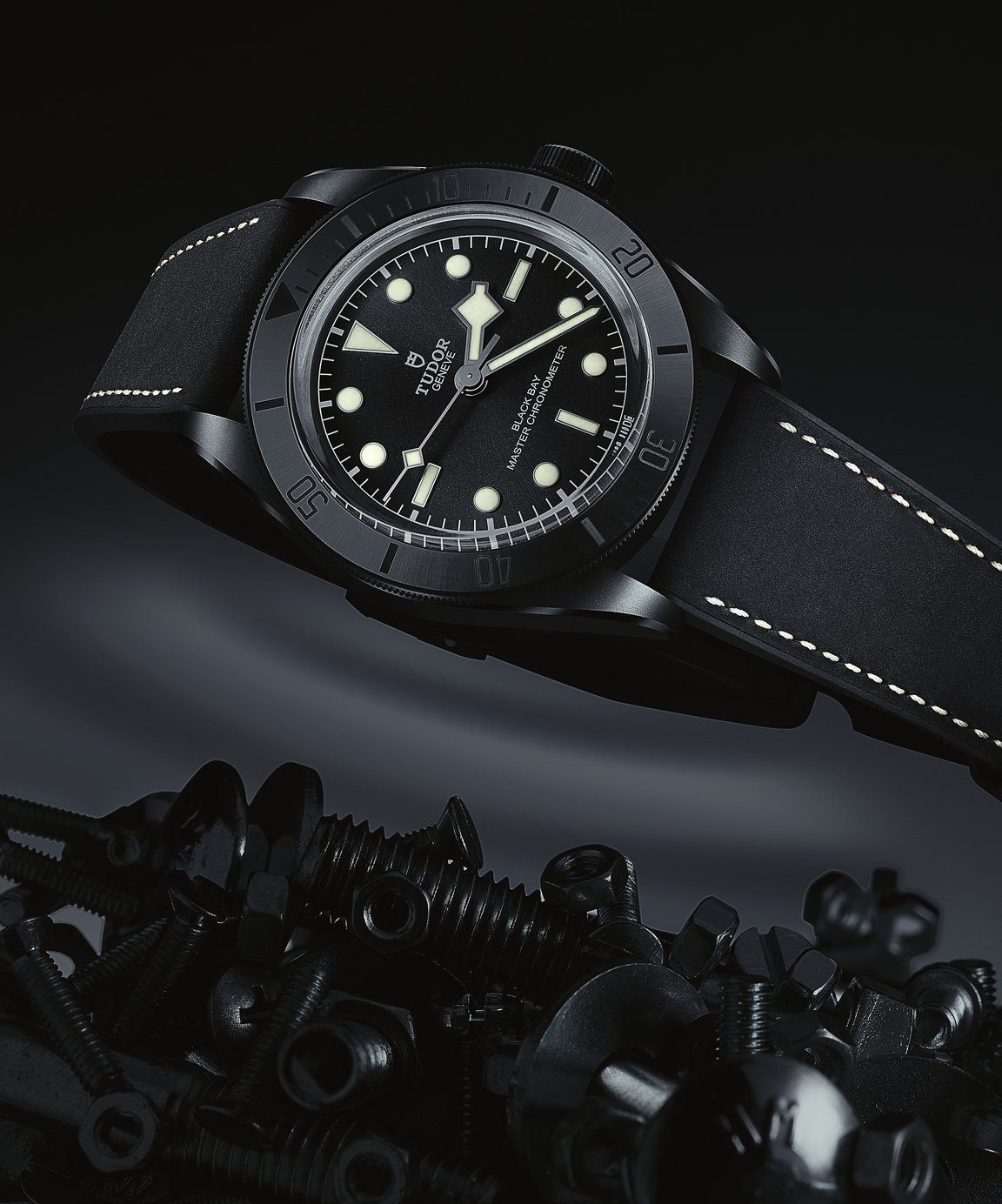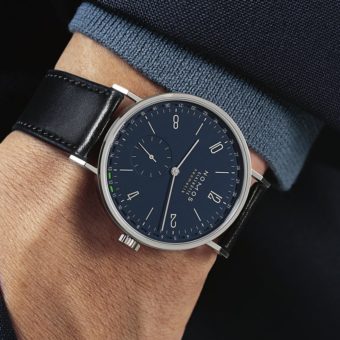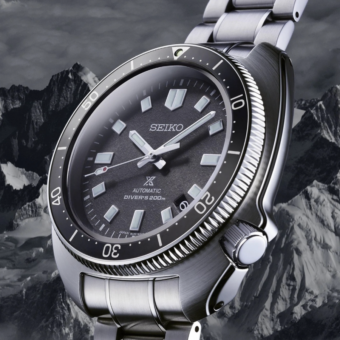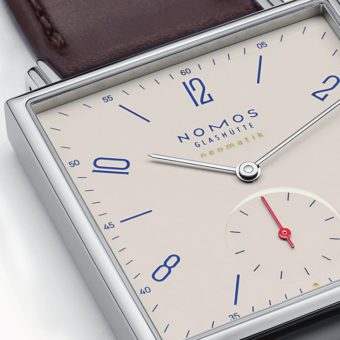This article was originally published in the March/April 2022 Issue of the WatchTime print magazine. Photos by Olaf Köster.
Without much fanfare, Tudor has elevated the Black Bay to the status of a Master Chronometer. This classic timepiece now upholds one of the strictest qualitative and technological standards in the watch industry. And the new Black Bay Ceramic underscores Tudor’s intention to no longer be regarded as Rolex’s younger sibling.
The certification of Master Chronometers means that Tudor has definitively emancipated itself, following its own path and setting itself apart in the industry, where no other brand except Omega offers watches in Master Chronometer quality. Omega, which belongs to the Swatch Group, certifies almost every watch in its collection as a Master Chronometer. Like Omega, Tudor has set up an in-house testing facility and conducts on-site tests under the supervision of the independent certification institute METAS (Swiss Federal Institute of Metrology). This leads us to conclude that the Black Bay Ceramic will surely not be the only watch from Tudor to leave the company as a certified Master Chronometer. But what exactly does “Master Chronometer” mean for Tudor and the Black Bay Ceramic? First of all, it confirms that this watch is “Swiss made” and that its movement has been certified as a chronometer by the Swiss testing institute Contrôle Officiel Suisse des Chronomètres (COSC), which measures the precision of the timekeeping in six different positions, at two different temperatures and with the mainspring in two different degrees of tension (100 percent and 33 percent).

However, the METAS requirements go beyond that. To comply with them, the watch’s rate must not stray into the loss column at all and it must not gain more than 5 seconds per day. That’s 5 seconds narrower tolerance than the COSC permits with its range of -4 to +6 seconds. It’s also 1 second less than Tudor’s in-house standard for models encasing manufacture calibers, which permits daily deviations ranging from -2 to +4 seconds. The tests are carried out over nine days under simulated wearing conditions and at temperatures of 23° and 33° Celsius.
In our rate tests, we found that the Black Bay Ceramic gained an average of 4.1 seconds when the mainspring was fully wound and 3.9 seconds after the watch had been left running for 24 hours without winding. This means that our test watch satisfies METAS’s conditions and exceeds Tudor’s strict in-house specification by 1/10th of a second when fully wound. The watch gained exactly 4 seconds per day on the wrist.
In addition to this precision, METAS’s certification also guarantees the same rate accuracy after exposure to a magnetic field with an intensity of 15,000 gauss. Tudor conducts the magnetic-field test in its own testing facility, where watches are exposed to correspondingly strong magnets. First, only the movement is tested in two different positions (flat and hanging); then, the entire timepiece is tested. A microphone is used to check that the movement and the watch continue to function properly while under the influence of a magnetic field with a strength of 15,000 gauss. After exposure to this strong magnetic field, the movement and the watch must not show any deviations in the precision of the timekeeping. To confirm this accuracy, Tudor and METAS have set up specially equipped test rooms, where the rate’s average deviation is measured between the second and third day after the watch’s exposure to the magnetic field. Our test laboratory cannot generate a magnetic field with an intensity of 15,000 gauss, but we repeatedly exposed our test watch to household magnets of various strengths and found that our timing machine discovered no measurable deviations during magnetization or immediately after.

METAS’s certification as a Master Chronometer also includes tests of water resistance and power reserve. These guarantee that the Black Bay Ceramic stays water resistant to a depth of 200 meters (according to ISO 22810:2010, not ISO 6425 for dive watches) and amasses a power reserve with an up-to-date duration of 70 hours. This interval is the norm for Tudor’s new calibers.
We also conducted the well-known “weekend” test. We took off our Black Bay Ceramic on Friday evening and slipped it back onto our wrist on Monday morning without having wound it in the meantime. Measured on the timing machine at the start of the new workweek, our watch’s timekeeping remained well within the tolerance range specified by METAS, with a daily deviation of +3 seconds.
To meet METAS’s strict requirements, significant modifications had to be made to the original Caliber MT 5602. These changes resulted in its new designation as Caliber MT 5602-1U. The “U” symbolizes a magnet and means that the Black Bay Ceramic is resistant to magnetism. As expected, Tudor divulges no details about the relevant technologies and constructive modifications. The only publicly known fact is that the balance spring is made of silicon. Tudor also manufactures the variable-inertia balance from an antimagnetic material, but the composition of this alloy remains undisclosed. Our test experience with Omega has shown that resistance to magnetic fields up to an intensity of 15,000 gauss can only be achieved by also making a number of other parts of Caliber MT 5602-1U from antimagnetic materials. These include certain components of the escapement, for example, the lever that bears the pallet jewels, the escape wheel and possibly some of the shafts and wheels. The skeletonized, bidirectional winding rotor is milled from a solid block of tungsten and afterward sandblasted and satin finished. We suspect that the rotor’s ball bearing is also manufactured from antimagnetic material.

This manufacture caliber, which is made in typical Tudor style, is mostly blackened, emphasizing the functionality, performance and robustness that it was engineered to provide. Stability is enhanced by installing the large balance under a bridge fixed at both its ends rather than beneath a cantilevered cock. The bridges and plate alternate between sandblasted and polished surfaces, as well as lasered decorations. Caliber MT 5602-1U is housed in a case that measures a generous 41 mm in diameter and resists pressure up to 20 bar. Although the Black Bay Ceramic continues this brand’s tradition of divers’ watches, it is not explicitly identified as a dive watch. The case lives up to the Black Bay name because it really is black through and through. Its monobloc middle piece is made of ceramic, also a first for Tudor (not factoring in the Only Watch unique piece from 2019). Beveled edges polished to a high gloss create a striking, model-defining contrast to the matte sandblasted surfaces. A pane of sapphire crystal is integrated into the caseback, which is made of 316L stainless steel and coated with black PVD. The same alloy and coating are used for the screw-down crown, which passes through a tube of circularly satin-finished stainless steel. A raised relief engraving of Tudor’s rose-shaped logo adorns the top of the crown. Knurling on the crown’s sides makes it easy to unscrew. The unscrewed crown jumps out at you, and it offers the right amount of springy resistance when it’s screwed back in.
The bezel, which can be rotated in only one direction, is equally satisfying to use. Like the crown, it’s made of 316L stainless steel and coated with black PVD. A black ceramic ring marked with numerals and indexes is inlaid into the bezel, which is easy to grip thanks to narrow fluting around its rim. The rotating ring is calibrated at five-minute intervals with alternating numerals and index lines; individual minute strokes mark the first quarter of an hour. The bezel clicks extremely precisely into place in single-minute increments. This would qualify the Black Bay Ceramic as a professional diving watch, were it not for the fact that it lacks a luminous orientation dot for presetting an intended dive time. As on the dial, a radial pattern adorns the satin-finished surface of the bezel’s ceramic inlay.

Last but not least, the background of the Black Bay Ceramic’s dial is also completely black. The minute track and the lettering are only slightly lighter, in a dark shade of gray. The most distinctive features on the dial are Tudor’s typical index appliqués, in the form of geometric bars, triangles and circles, as well as the “Snowflake” hands, which first appeared in 1969 and have been a trademark of Tudor’s dive watches ever since. The appliqués and hands are generously filled with Super-LumiNova so they glow bright green in the dark for a long time and provide optimum legibility. Strong contrasts ensure equally good readability during the day.
The Black Bay Ceramic is attached to a hybrid strap made of leather and rubber. Needless to say, the strap is black, with “Snowflake” motifs on its underside and beige contrasting stitching, which matches the color of the indexes and hands on the dial. One end of the strap is affixed with a pin in the single folding clasp, which is made of black PVD-coated 316L stainless steel. The safety catch, which visually completes the clasp with the Tudor coat of arms, contributes to good wearing comfort on the wrist. The scope of delivery also includes a black textile strap with a cream-colored stripe and a pin buckle.
As a result, the Black Bay Ceramic is a subtle blend of traditional aesthetics and modern watchmaking. It is much more than just a reissue of a classic that reflects nearly 70 years of Tudor’s history as a maker of dive watches. With technology, value and precision that go far beyond a typical reissue, this new model sets high standards for the brand itself and in the entire watch industry.
To learn more about Tudor, click here, and to subscribe to the WatchTime print magazine, click here.






